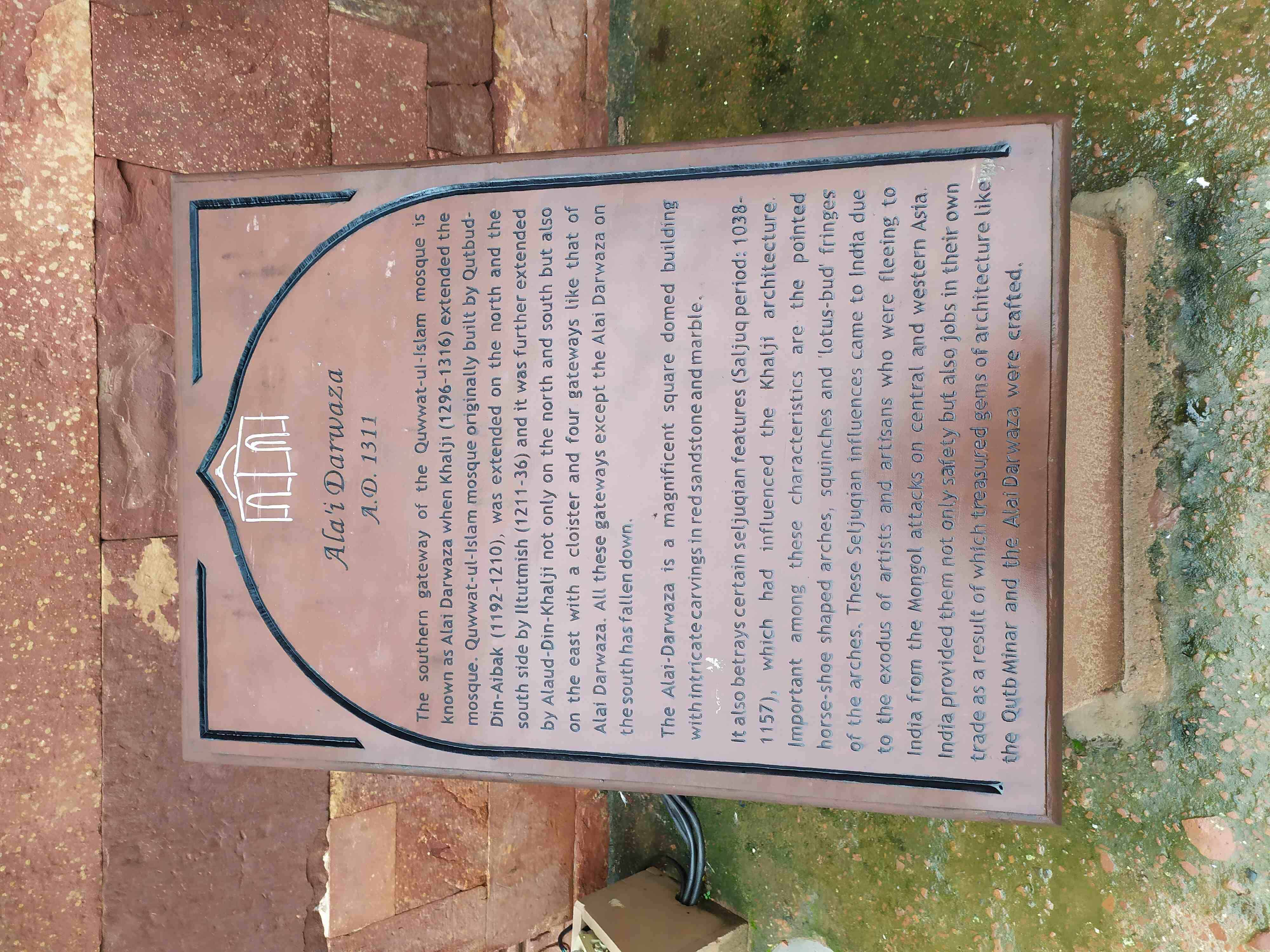
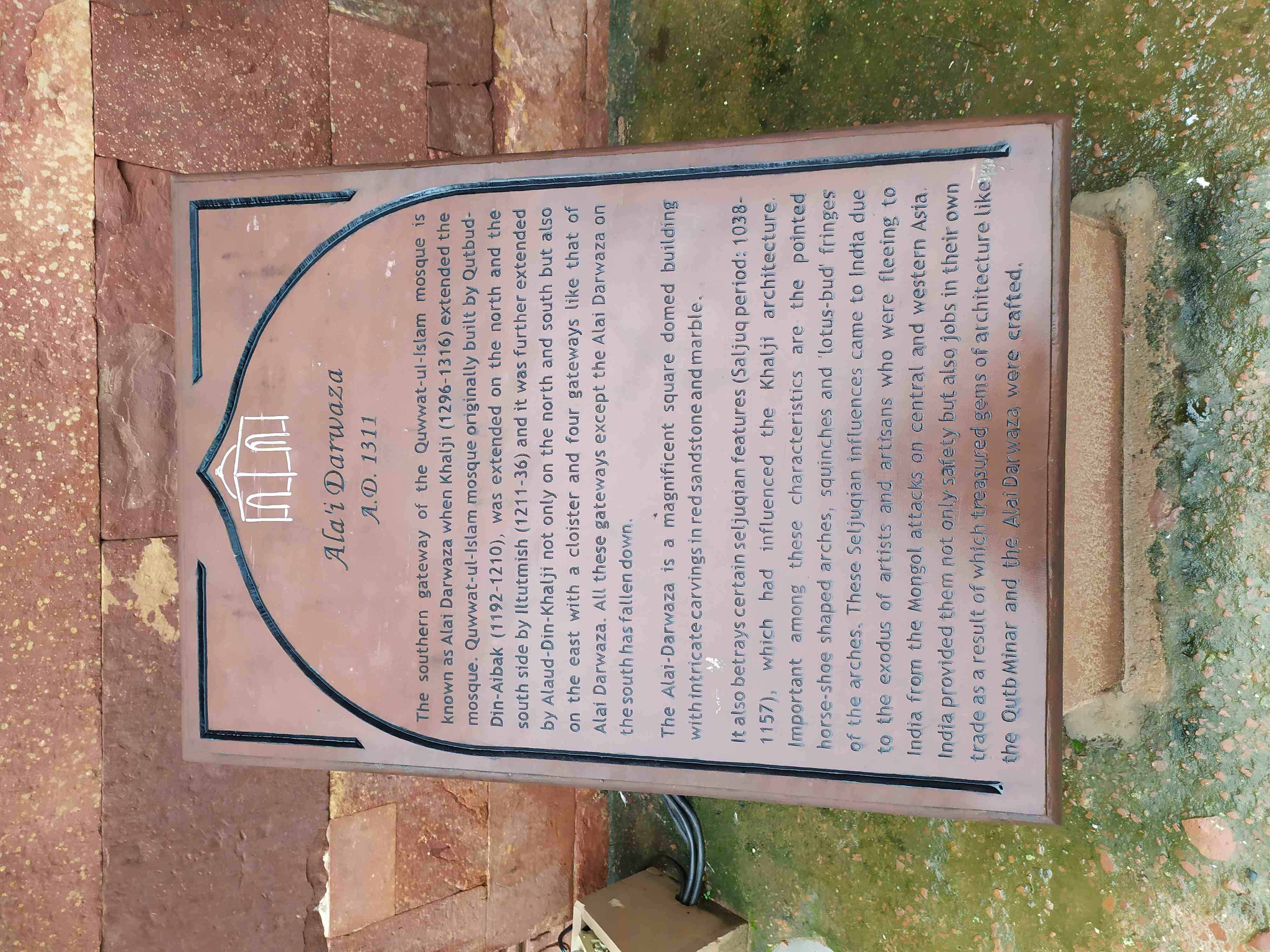
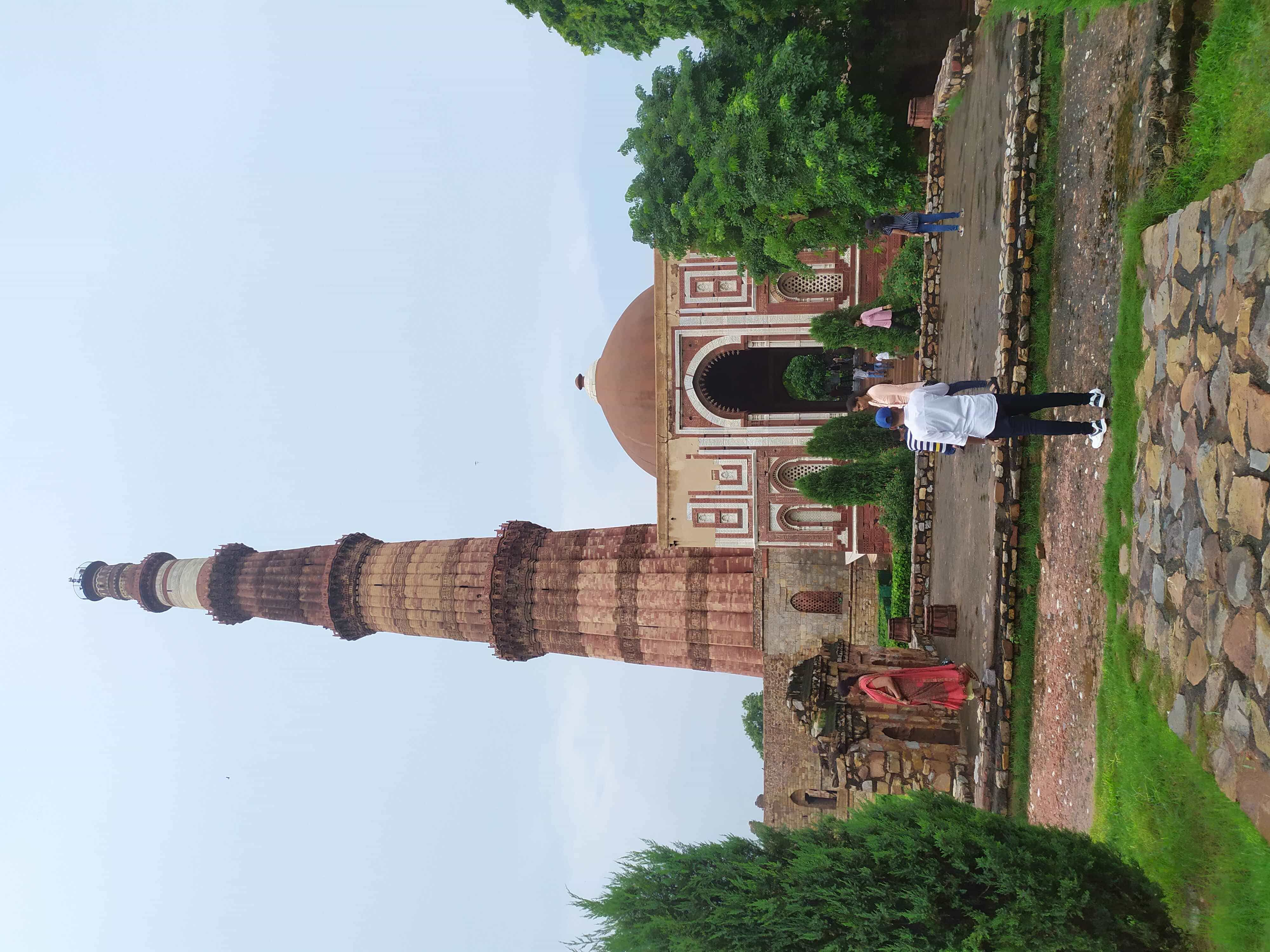
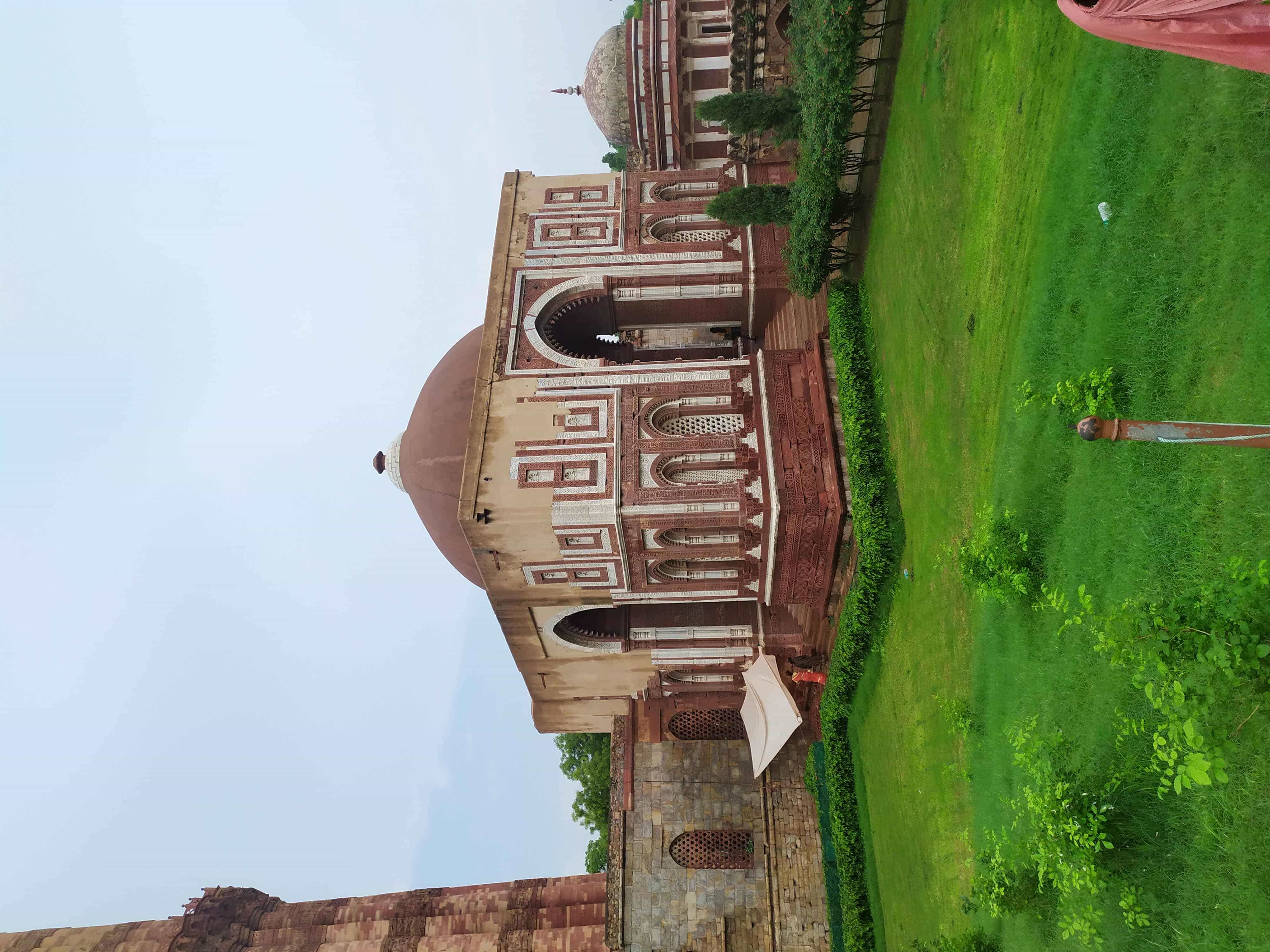
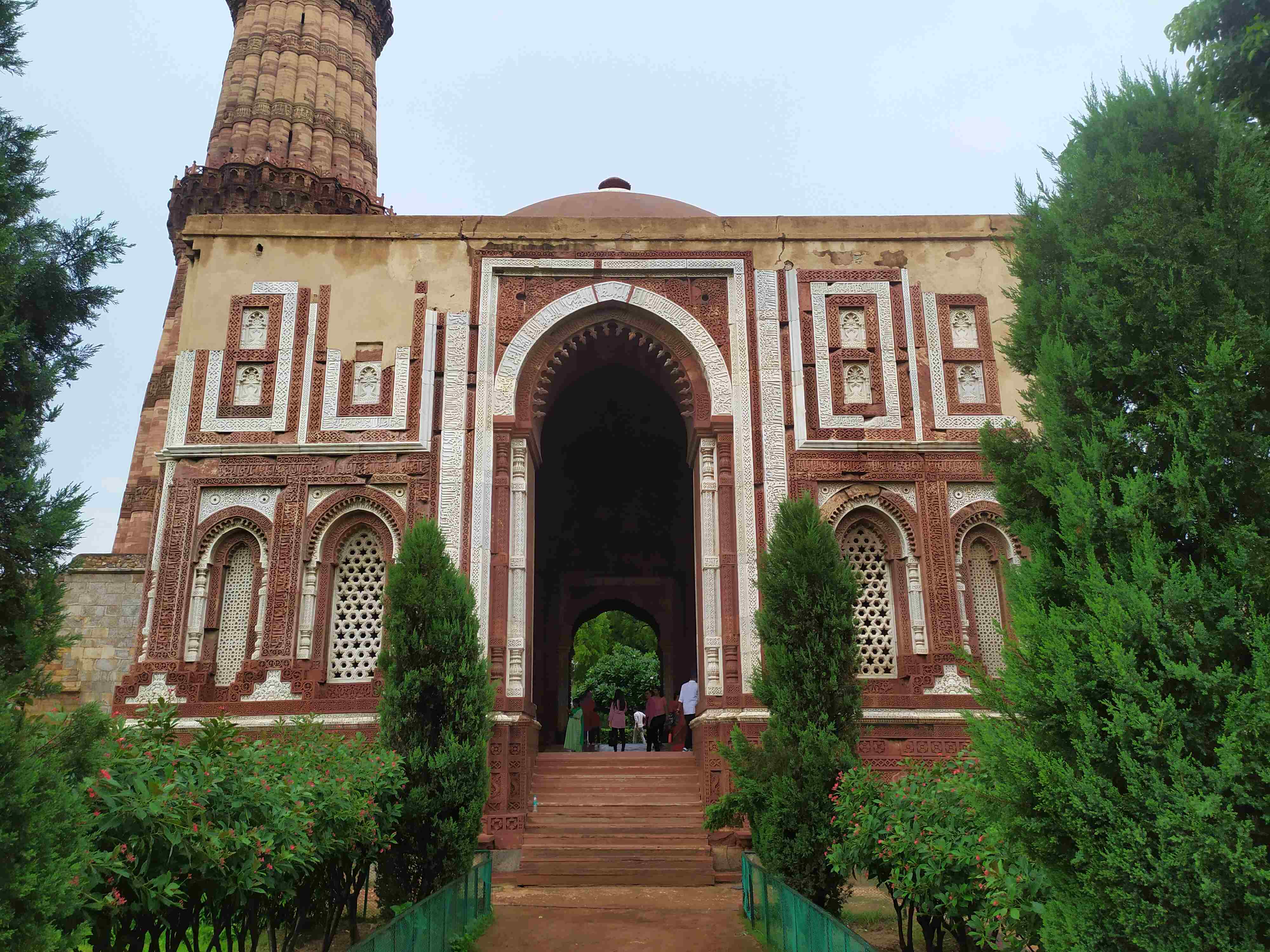
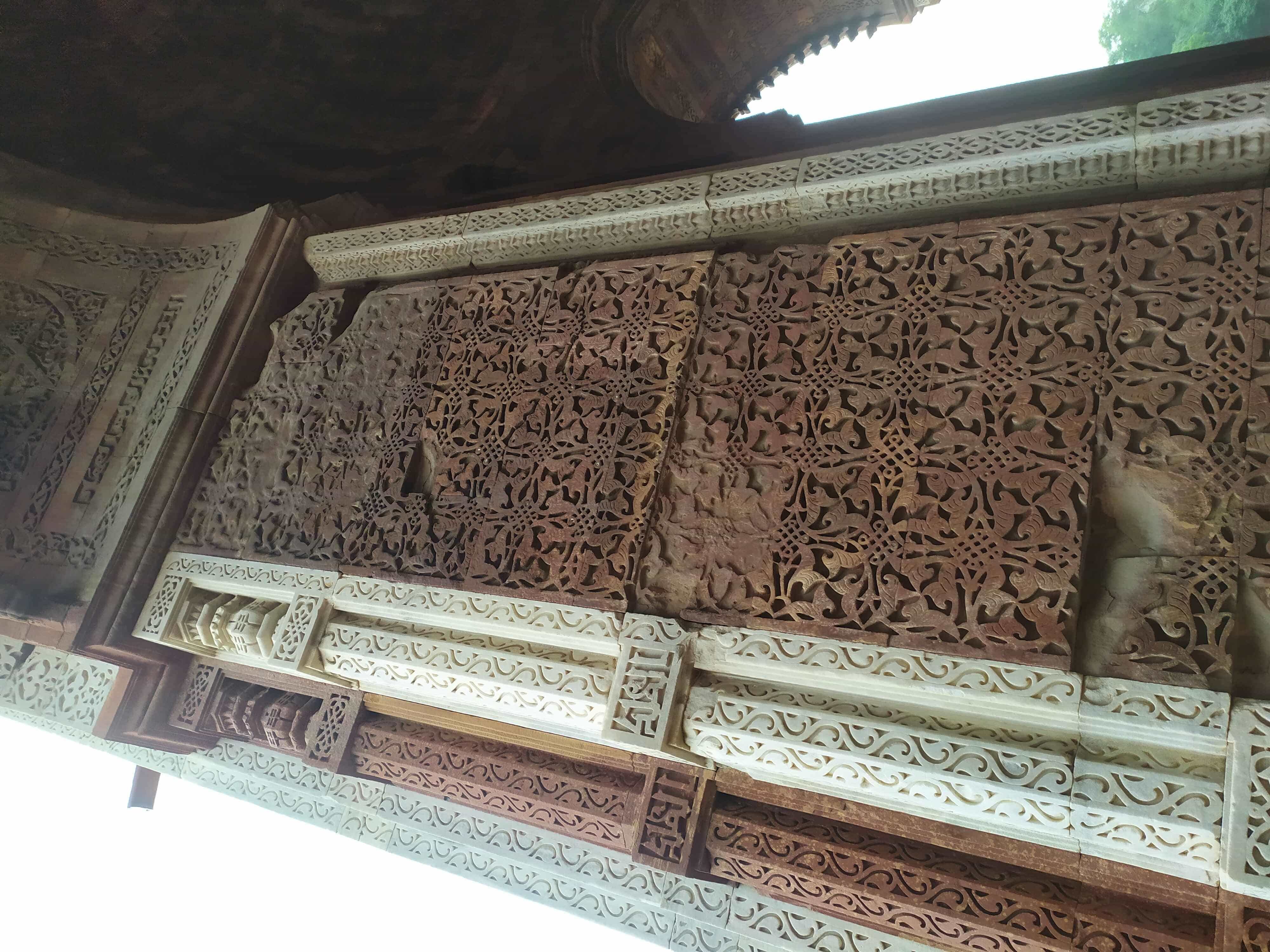
The Alai Darwaza: A Masterpiece of Indo-Islamic Architecture Step through time as you approach the Alai Darwaza, a stunning gateway that stands as a testament to the artistic and architectural revolution of 14th-century Delhi. Built in 1311 by Sultan Alauddin Khalji, this magnificent structure is not just a doorway—it's a portal to a pivotal moment in Indian history. As you stand before the Alai Darwaza, let your eyes feast on the seamless blend of red sandstone and white marble, a chromatic dance that has captivated visitors for centuries. The walls, adorned with intricate Arabic calligraphy, tell silent stories of power, faith, and artistic prowess. But the true marvel of the Alai Darwaza lies in its dome—a feat of engineering that marked a turning point in Indian architecture. For the first time on Indian soil, a dome was constructed with scientific precision, paving the way for future architectural wonders. As you gaze upward, imagine the audacity of the artisans who dared to reach for the sky with such accuracy. The Alai Darwaza was meant to be one of four grand entrances to an expanded Quwwat-ul-Islam Mosque, a dream cut short by Sultan Khalji's death in 1316. Yet, in its solitary splendor, it stands as a more powerful monument than any completed project could have been—a testament to ambition, creativity, and the unpredictability of history. As you explore, notice the exquisite inlaid marble decorations and latticed stone screens, showcasing the remarkable fusion of Turkish and local craftsmanship. These details make the Alai Darwaza the first Indian monument to fully embrace Islamic methods of construction and ornamentation, earning it UNESCO World Heritage status. Remarkably, the Alai Darwaza holds the title of Delhi's oldest building, a silent sentinel that has witnessed the ebb and flow of empires. Visit this architectural gem and touch the very foundations of Indo-Islamic art—a legacy that continues to shape the cultural landscape of India to this day.